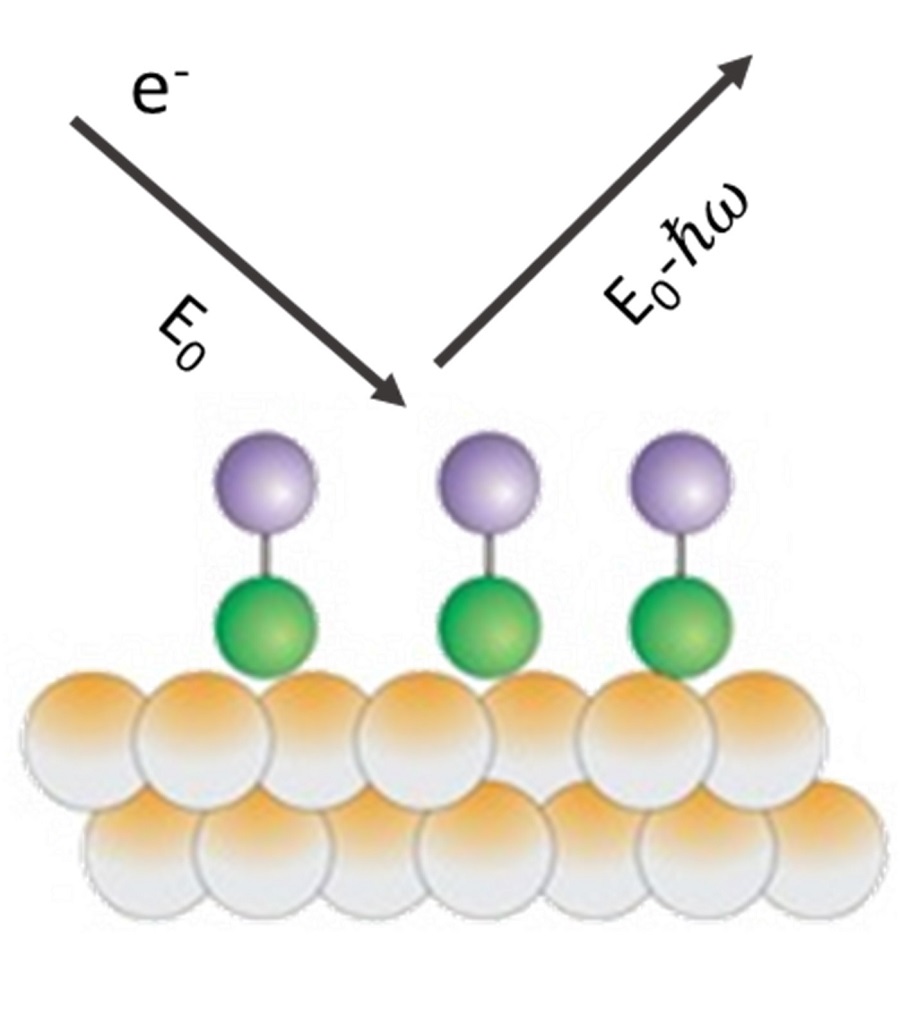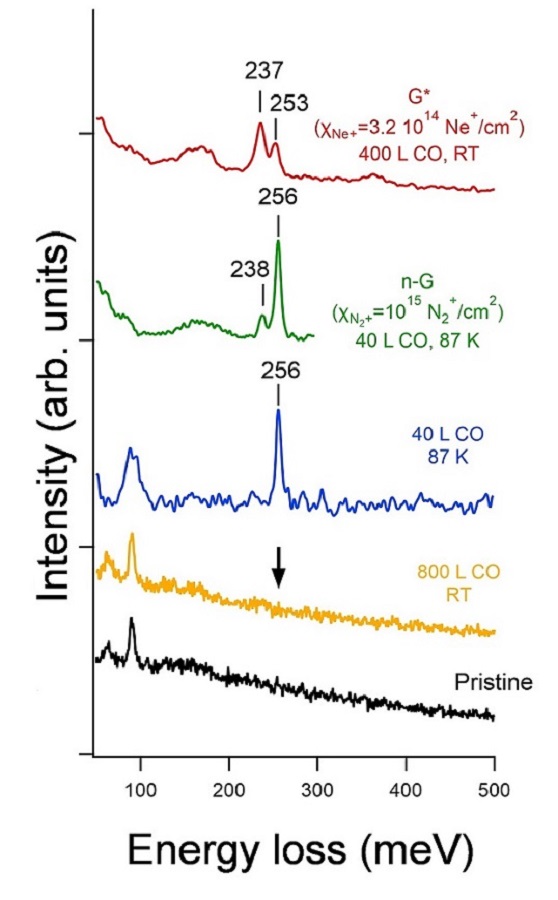Setup

SPECS Delta0.5 spectrometer
Energy resolution (direct beam) <2 meV with beam current ~10 pA
Primary Electron Energy: 1-100 eV
Specular reflection angle: 53°<θ<90°
Installed on a UHV chamber with XPS spectrometer and connectable to a supersonic molecular beam.
Method
This vibrational spectroscopy exploits the interaction of the surface with a monochromatic electron beam. During the scattering process, an energy transfer from the electron to the surface (or vice versa) can occur with the consequent excitation of surface phonon modes and / or collective electronic excitations (surface plasmons).
This surface-sensitive analytical technique can be applied to conductive or semiconductive samples or supported ultra-thin films and provides information on:
- Surface phonon spectrum
- Phonon spectrum in presence of adsorbates
- Surface phonon dispersion
- Energy and dispersion of surface plasmons (optical and acoustic)

Highlights
HREELS spectroscopy applied to bidimensional systems, bare and in presence of adsorbates
The energy loss peaks allow to determine the characteristics of the material, for instance by analising Fuchs-Kliever phonons, if present, and the presence of adsorbates in molecular or dissociated form.
 |
 |
| Characteristic vibrational spectra of several supported bidimensional films. Refs: Appl. Surf. Sci. 2020, Phys. Rev. B 2003 |
Adsorption of CO on graphene monolayers of different defectivity grown on Ni (111). Refs: Appl. Surf. Sci. 2018, Phys. Chem. Chem. Phys. 2016 |
EELS spectroscopy applied to the study of collective electron excitations

First measurement of the acoustic surface plasmon of Be(0001). Ref:Nature 2007








